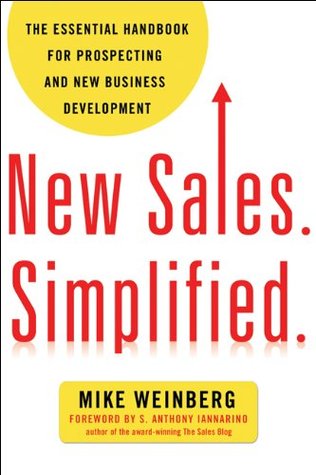More on this book
Community
Kindle Notes & Highlights
Read between
April 19 - April 19, 2025
a severe shortage of sales mentors.
they simply do not know what to do.
Waiting is a key ingredient in the recipe for new business failure.
new business success usually results from a combination of perseverance, creativity, and resilience while staying laser-focused on a well-chosen, finite list of target prospects.
Again, people buy from people they like and trust. Part of our job is to ensure we are likable and trustworthy.
Only salespeople that dedicate blocks of time on their calendar for prospecting activity consistently succeed at acquiring new business.
Our reason for existence The direction the company is headed and why it’s the correct course What we sell and why we sell it Which markets to pursue and where we are positioned in those markets The competitive landscape and how we stack up against competitive offerings, and why we’re better or different Why our pricing model is appropriate for the value we create in the markets we’re pursuing and against the competition we’re facing
now call the New Sales Driver for the first time.
Remember: SALES IS A VERB.
we can’t prospect if we don’t know who the prospects are.
Who are our best customers? What are their common characteristics? What do their businesses “look, smell, and feel” like? Where are they located? Are they a particular size (e.g., in terms of revenue) or in certain vertical markets or niches where we have a higher rate of success? Where can we find potential customers with similar profiles?
Frustrated about not getting a “kill” with the first shot, they forget about all the thought and prep work invested to create their original list. In frustration, they discard their lists and begin shooting in a completely different direction at a new set of targets. Typically, this redirection produces similar disappointing results, so they begin the cycle all over again, dooming their business development effort to failure.
There’s no prize for sales creativity or being known for selling into the widest variety of customer types. Find the path of least resistance and then focus like mad on that very path.
The key is to create a target list that can be worked effectively and thoroughly over that defined period.
I suggest dividing the existing customers into four categories: 1. Largest—in terms of dollars spent (not size of the organization) 2. Most Growable—best opportunity for incremental revenue 3. Most At-Risk—highest probability of losing their business (some or all of it) 4. Other—accounts that do not qualify for any of the previous three categories
key to gaining the interest of senior executives is to be able to connect with them about issues that are on their mind.
Any approach that capitalizes on the internal referral is great and certainly places us in a stronger position than if we were initiating contact without
Marshaling the Weapons in Your Arsenal
Our Sales Story.


